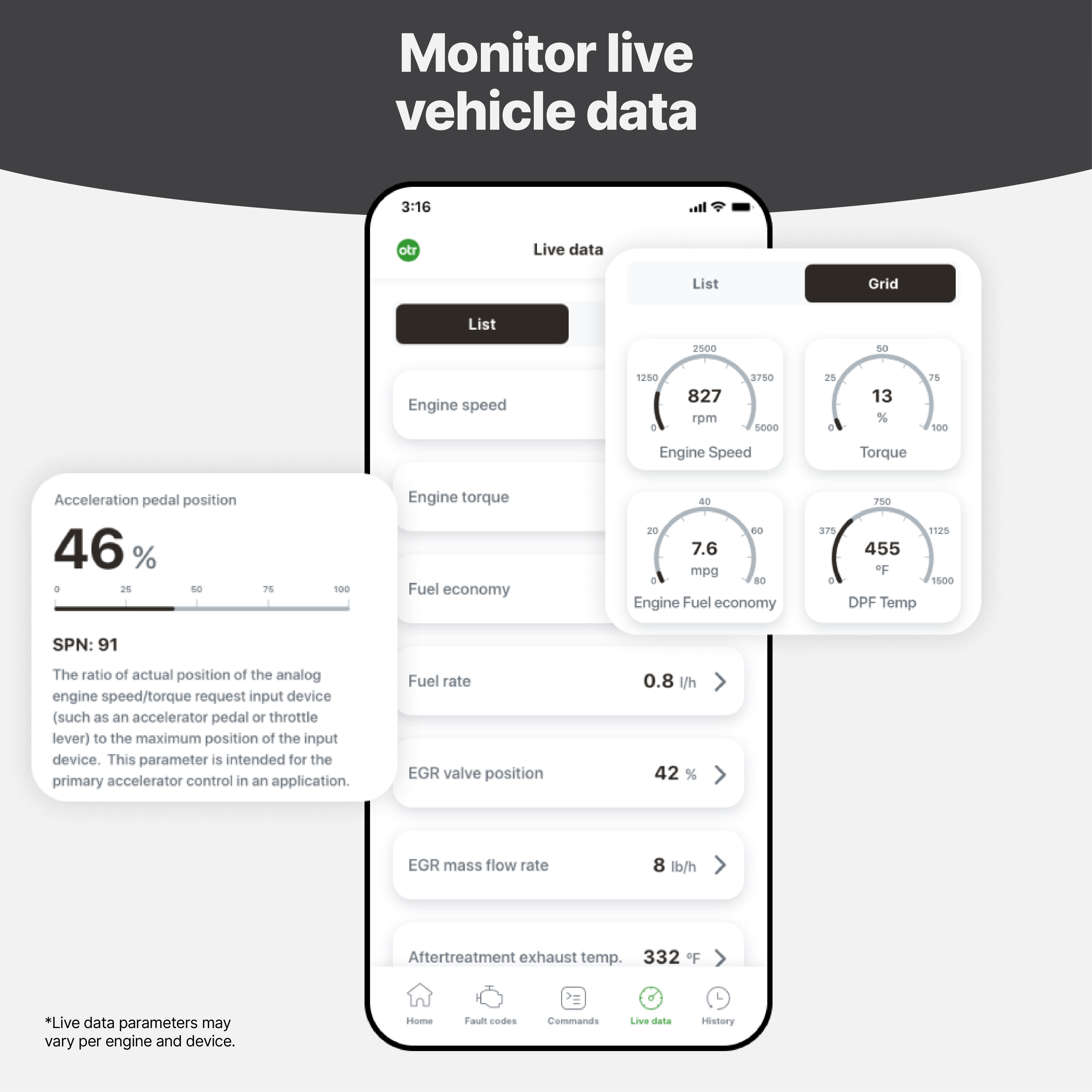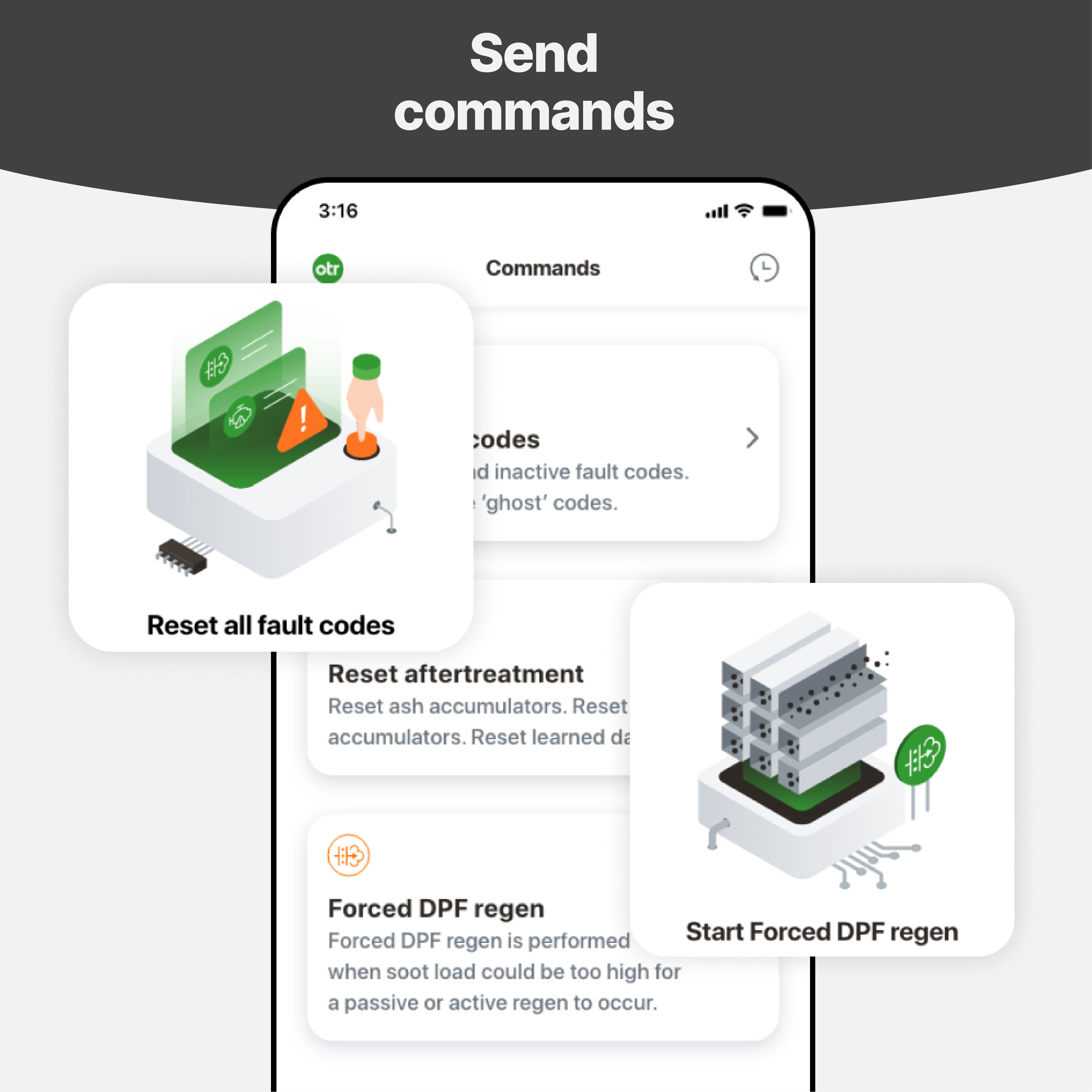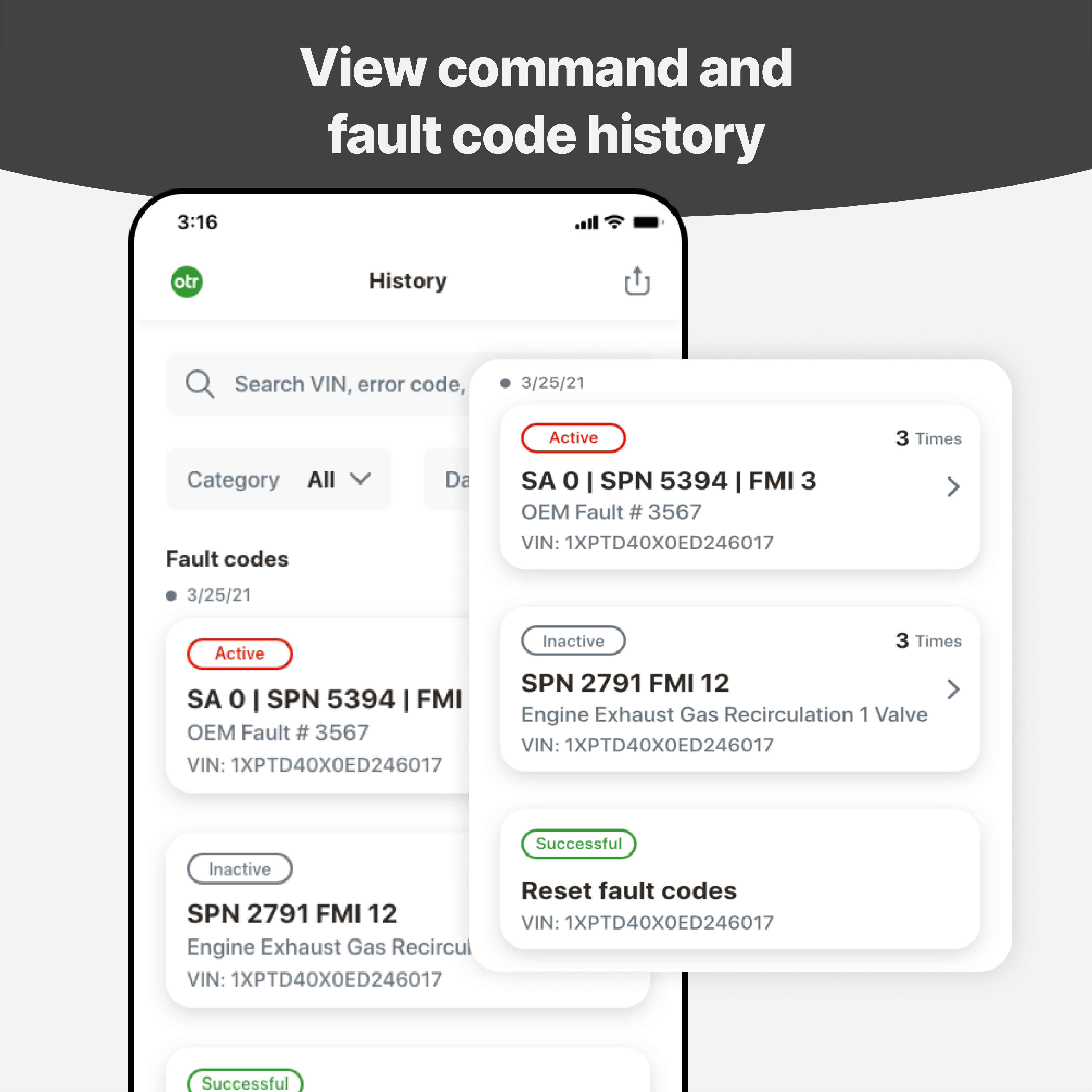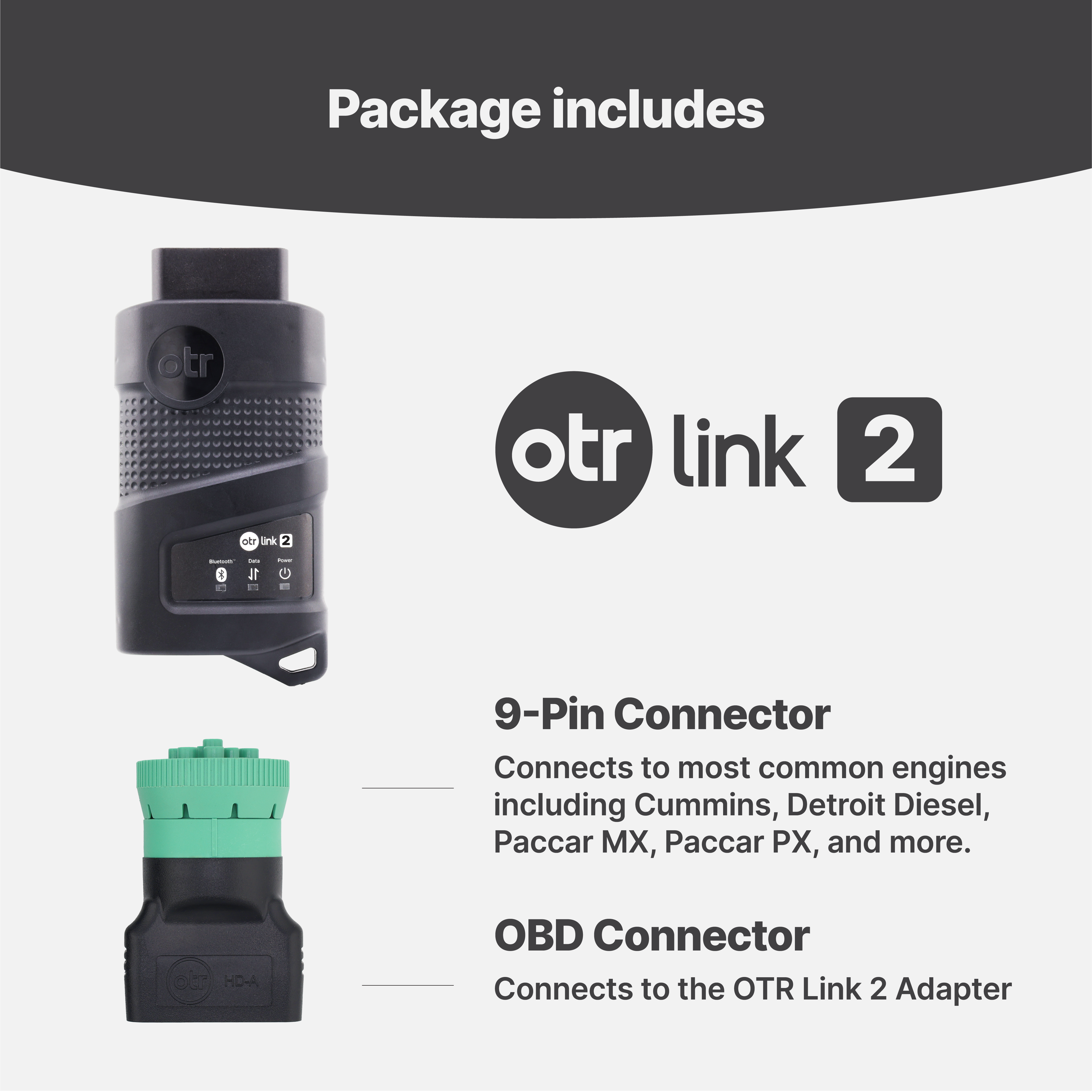FAULT CODES
Know what each fault code really means
And unlock the meaning behind your check engine light.
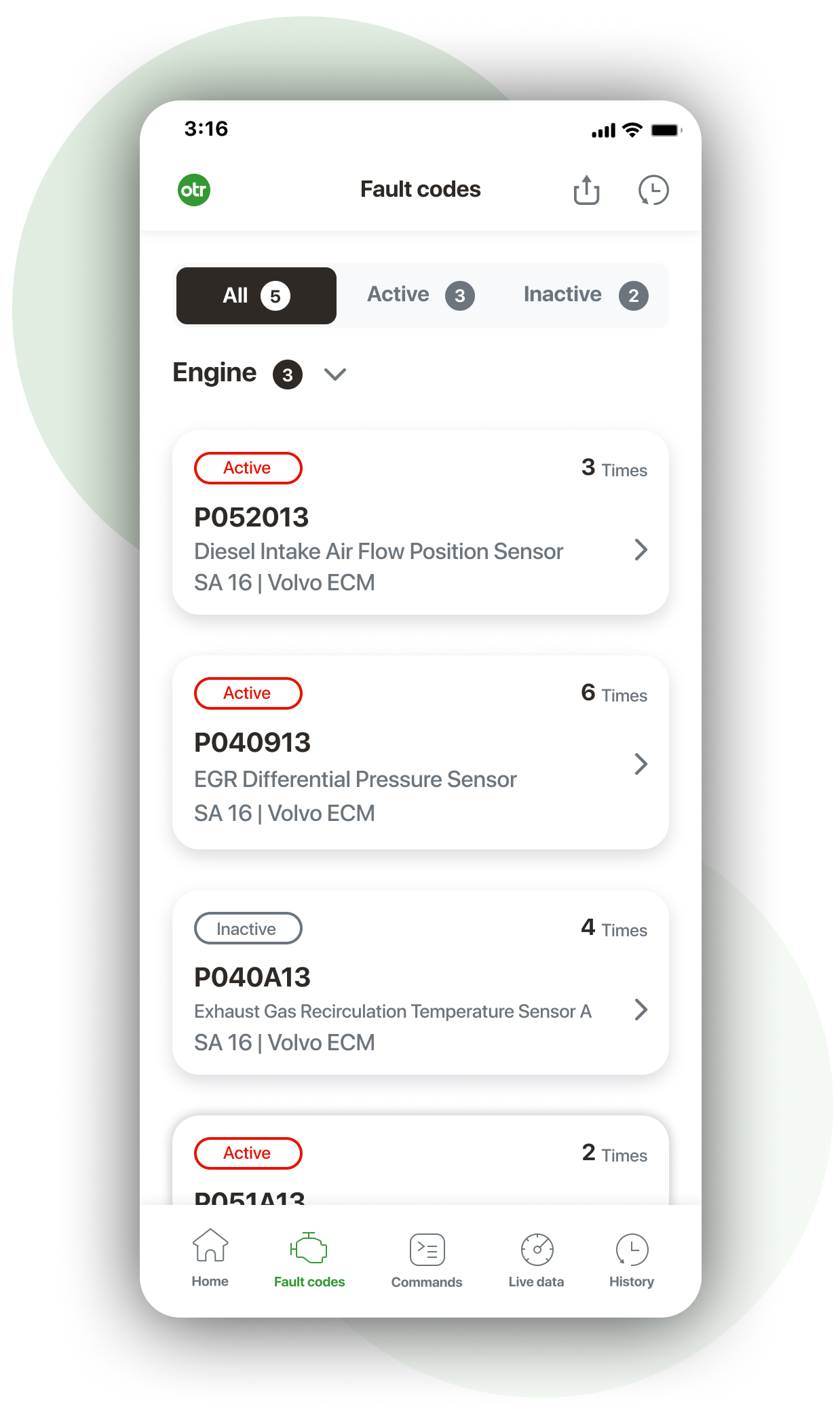
Your check engine light isn’t just a warning — it’s your truck telling you something’s wrong
With OTR Diagnostics, you don't just see the codes; you learn what they really mean. This helps you fix problems quickly and get your truck back on the road.
✔️ Unlock detailed explanations of each fault code.
✔️ Understand not just the code, but the specific issue and suggested fixes.
✔️ Empower yourself to perform your own repairs with guided diagnostics and easy-to-follow repair suggestions tailored to your truck's specific needs.
11 fault code myths debunked
Explained by Jason Chise, a Diesel Technician
#1 - If the truck runs fine, I can ignore fault codes.
In my experience, just because a truck seems to be running fine doesn't mean everything is okay. Those fault codes are actually early warning signs. By ignoring them, you might be setting yourself up for some serious engine or aftertreatment issues later. What seems like no big deal now could turn into expensive repairs if those fault codes and warnings aren’t looked at. It’s always better to check out any fault codes early to prevent bigger problems down the road.
#2 - Fault codes always indicate something is broken.
That's not always the case! When the check engine light comes on, it doesn’t necessarily mean something is broken.
Diagnosing the fault code and thoroughly reviewing the troubleshooting data is crucial. Often, fault codes serve as early warnings, signaling that something may soon need attention or that maintenance like cleaning the DPF filter is required.
Understanding these fault codes can prevent minor issues from escalating into major repairs, helping you maintain optimal performance and reliability.
#3 - All trucks use the same fault codes.
It's a common misunderstanding that all trucks use the same fault codes. In reality, fault codes can differ quite a bit between different makes and models of trucks.
To get the most accurate data and ensure that your repairs are effective, it’s crucial to use a diagnostic tool that’s specifically designed for your vehicle. This tailored approach helps ensure that you’re not just guessing but are making informed decisions based on correct information.
#4 - Diagnostic tools are too expensive for individual owner-operators.
Some might think diagnostic tools are too pricey for individual owner-operators, but that’s not necessarily true. Consider the initial cost of a diagnostic tool as a wise investment. It can save you a significant amount of money by reducing potential repairs and avoiding unnecessary downtime.
Tools like OTR Diagnostics are designed to be cost-effective, helping you lower your maintenance expenses significantly as you continue to use them. By catching issues early and managing routine maintenance efficiently, you ensure your truck stays road-ready without breaking the bank.
#5 - Clearing fault codes resolves the issue.
Many people think that if you clear a fault code, you've fixed the problem, but that's not true. Clearing or resetting a fault code is like turning off a warning light without fixing what caused it. It's useful to figure out if the problem keeps happening or if it was just a one-time error, which we sometimes call a ghost code. But if there's an ongoing issue, just clearing the code won't fix it.
You need to find out what's wrong and repair it. This could mean you have to replace parts, fix some wires, or perform a DPF regeneration. Make sure you solve the actual problem before clearing any codes to keep your vehicle running smoothly.
#6 - I can get away with using cheaper diagnostic tools for my truck.
Choosing cheaper diagnostic tools might seem like a good way to save money at first, but this decision can lead to greater expenses over time. These lower-cost tools often provide inaccurate data and lack the capability to diagnose complex issues effectively.
This can cause you to miss important warnings or misdiagnose problems, leading to more severe damage and higher repair costs. Moreover, inexpensive tools may not always be compatible with the specific year and engine type of your truck, and they often lack the necessary support to help you when problems arise. It’s risky to connect an unreliable tool to your diagnostic port. If you're not completely sure it’s safe, it could potentially lead to further issues.
Investing in a reliable, well-supported diagnostic tool like OTR Diagnostics ensures accurate diagnostics and peace of mind, helping to keep your truck running efficiently and saving you money in the long run.
#7 - Fault codes can be checked during routine maintenance only.
Waiting until scheduled maintenance to check fault codes is a risky strategy. It's crucial to address these codes as soon as they show up. This proactive approach ensures that your truck remains in optimal condition and helps prevent minor problems from escalating into major, costly repairs.
Regular monitoring and immediate action keep your truck running smoothly and efficiently, avoiding unexpected downtime and expenses.
#8 - Resolving fault code issues is only for professional mechanics.
There's a common belief that diagnosing and fixing fault codes is a job for the dealers only. However, that's not the whole story. Many of the issues indicated by fault codes can actually be handled by anyone equipped with the right tools and some basic understanding.
With OTR Diagnostics, you're not just reading codes; you're learning how to address them, making it an invaluable part of your everyday maintenance. Whether you're a seasoned pro or just starting to learn about your truck, this tool empowers you to keep your vehicle running smoothly without always needing to run to the dealer.
#9 - Why don’t I just trust my ELD for reporting fault codes?
While your Electronic Logging Device (ELD) excels at tracking hours and ensuring compliance, it's not designed to provide comprehensive diagnostics for your engine's health.
ELDs might overlook subtle yet critical signs that could indicate underlying issues. Using a dedicated diagnostic tool, we gain in-depth insights into your truck's engine and other vital systems. This deeper diagnostic capability allows us to detect and address problems that ELDs may not identify, ensuring your truck operates at its best and preventing costly repairs down the line.
#10 - According to my mechanic, Resetting out fault codes is not recommended.
Resetting the fault codes is needed to validate the fix, but only after the underlying problems have been properly diagnosed and resolved. This is needed when resetting your truck’s diagnostic system to ensure that any new fault codes are accurate and relevant.
Most fault codes do not clear by themselves, so you need to reset the fault codes with a diagnostic tool. You also may need to run a forced DPF regen or another bi-directional command, depending on the fault code and the severity.
#11 - Why should I pay attention to fault codes if they don’t actually repair my truck?
Think of fault codes as your truck's way of signaling a health check, much like when your check engine light comes on. This light doesn't fix anything by itself; instead, it alerts you that something needs attention. Similarly, each fault code provides specific information about underlying issues.
Understanding what each code indicates allows us to diagnose problems precisely and efficiently. This targeted approach ensures that repairs are necessary and effective, preventing wasteful spending and potential future breakdowns.
By addressing these codes promptly when they appear, especially when accompanied by a check engine light, you keep your truck running smoothly and avoid larger, more costly problems down the road.
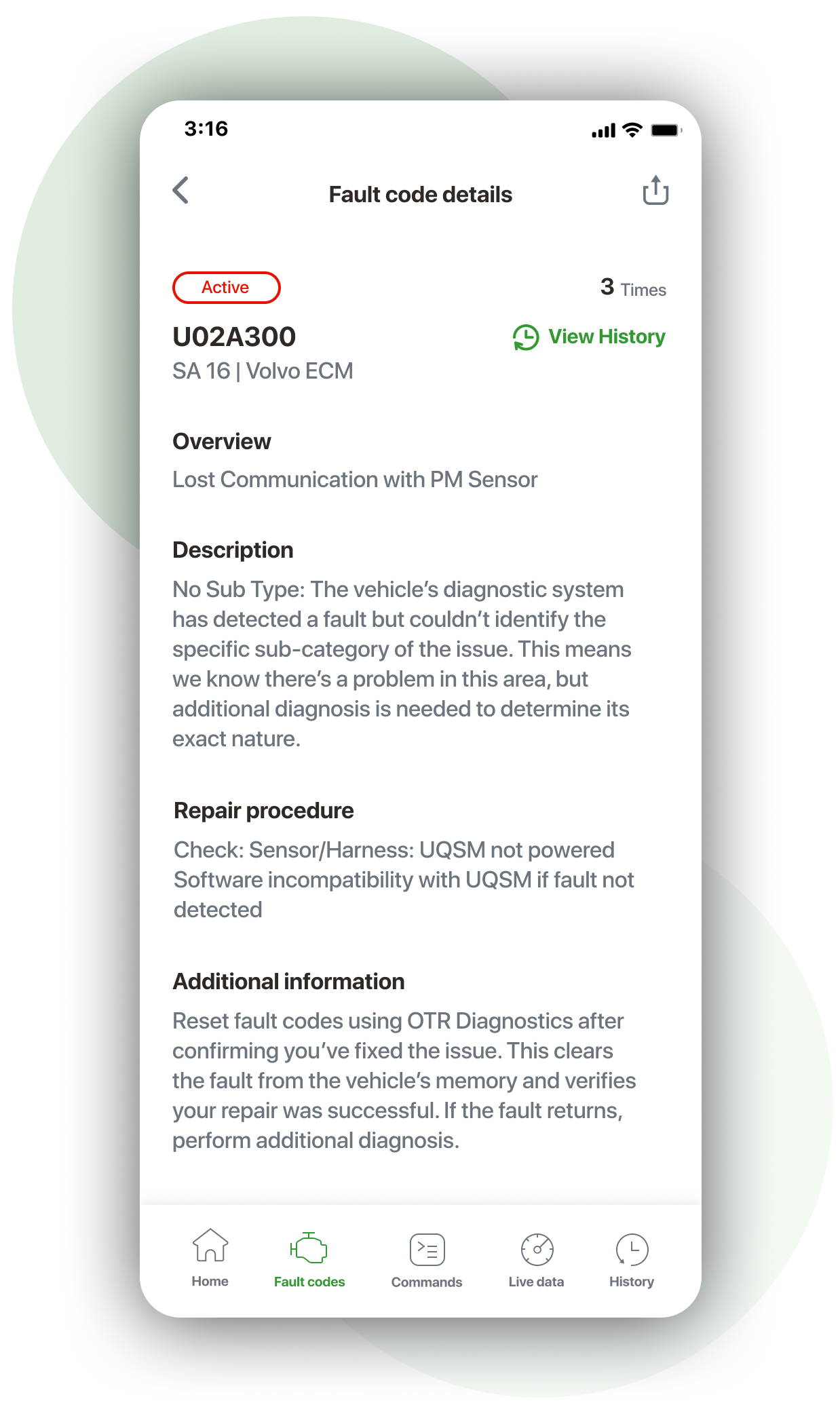
Fault codes explained
Fault codes are like your truck's way of sending specific messages about its health. Here’s how to understand these alerts quickly:
What they are:
- OEM P Codes fault codes pinpoint exactly what part of your truck needs attention.
Example explained:
- Code: SPN 5394 FMI 3
- Meaning: The aftertreatment ECU has detected an issue with the DEF dosing valve circuit.
- Risk: The fault code can cause an immediate derate situation putting your truck at risk of needing a tow.
Why it matters:
- Knowing the fault codes help you identify problems early, allowing for quick fixes.
- Addressing issues as they arise keeps your truck running efficiently and avoids bigger, costlier problems down the road.
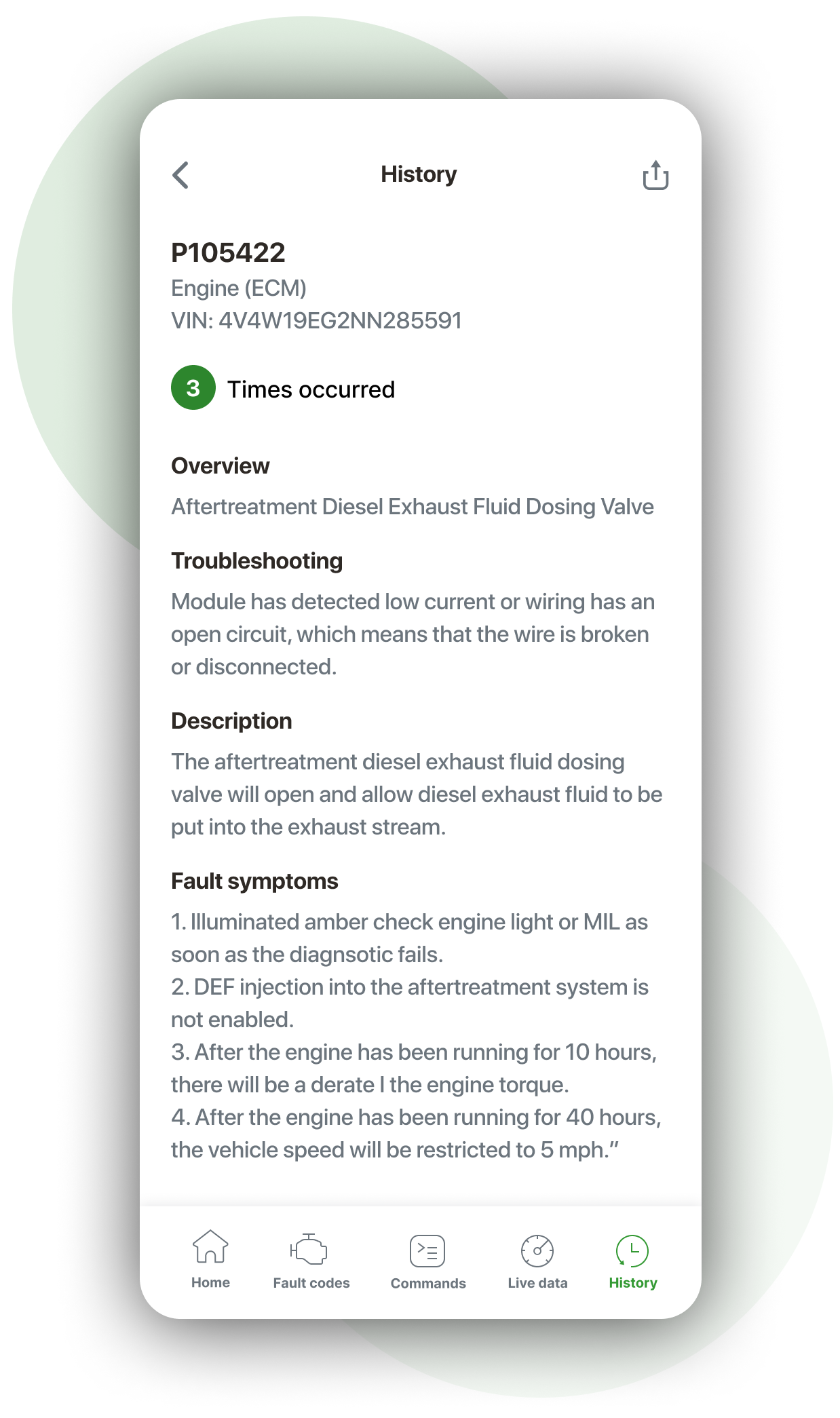
Easy sharing and printing of fault codes
- Save, print, or share a single fault code or the entire history of fault codes for your vehicle.
- This feature is beneficial if you are planning to share the fault codes with your shop, technician, or fleet manager.
- It lets you show them exactly what’s wrong, keeping everyone honest and on the same page. This way, you can make sure your repairs are done right and on time.
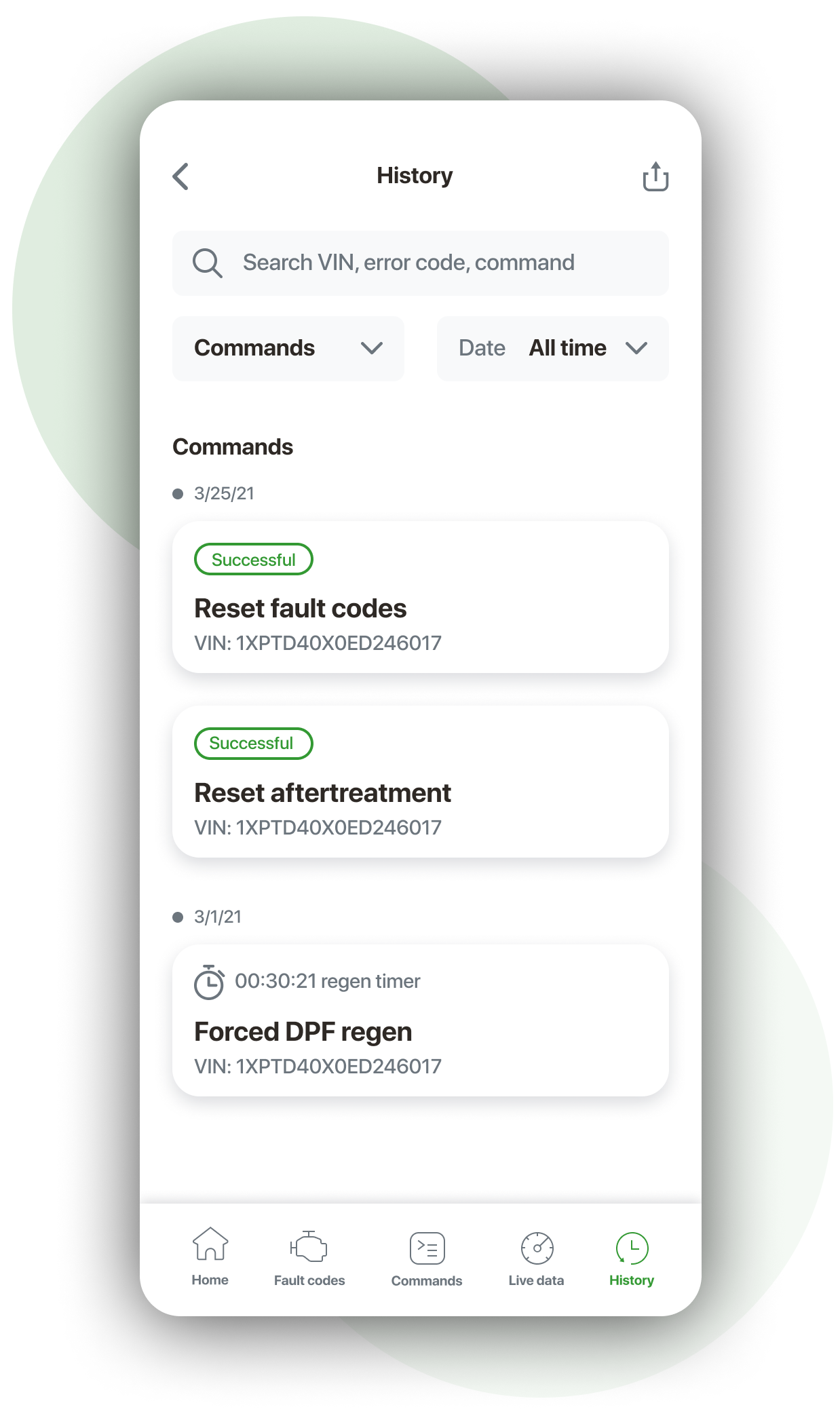
Keep your fault codes and commands safe in the cloud
All fault codes are securely stored in the cloud, giving you access anytime and anywhere. This is helpful for tracking down recurring issues and analyzing intermittent 'ghost codes' that come and go.
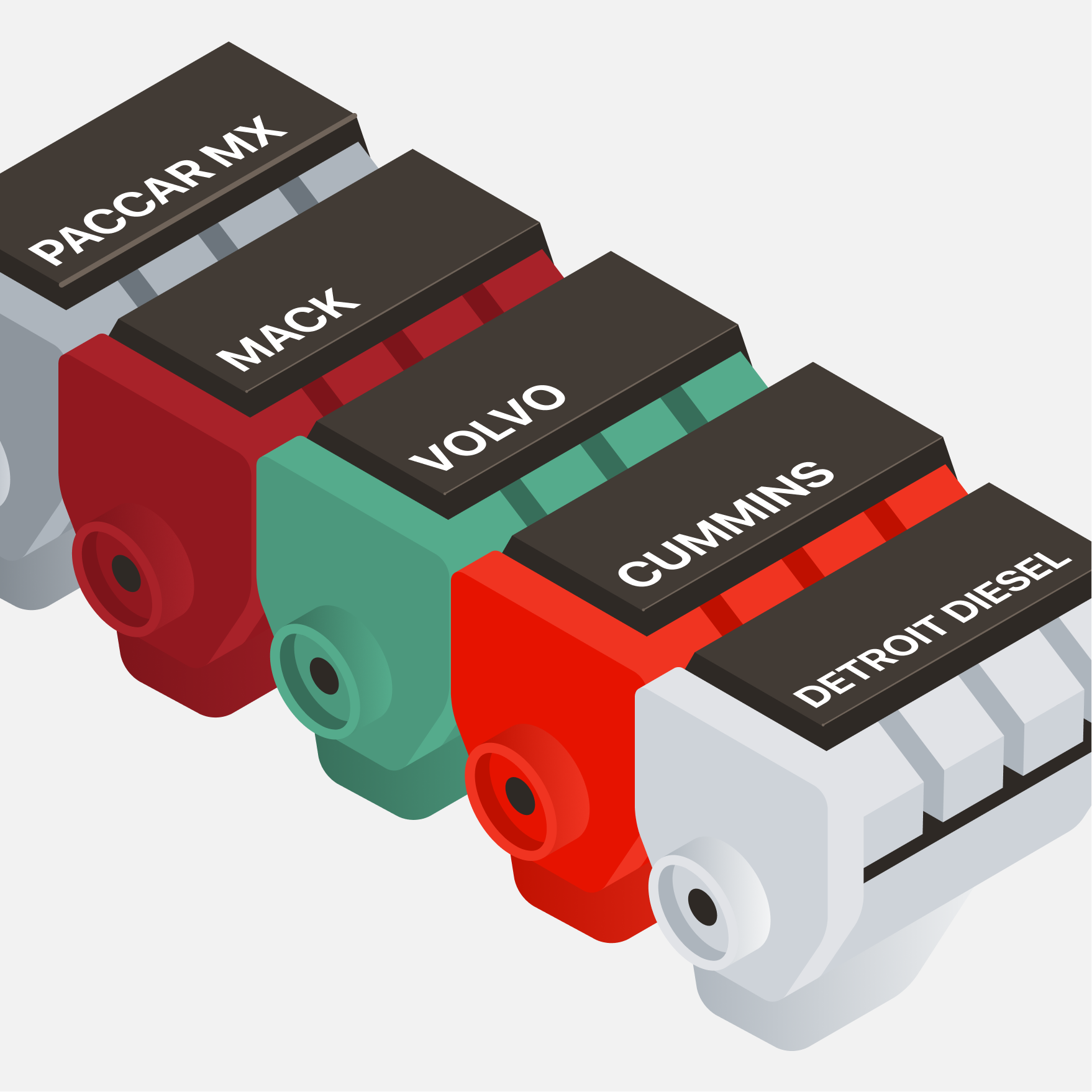
OTR Diagnostics



